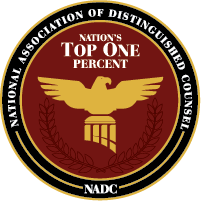Traffic Accident FAQs – Understanding Your Rights and Responsibilities
Welcome to the Traffic Accident Frequently Asked Questions section provided by Lebowitz & Mzhen Personal Injury Lawyers. Dealing with the aftermath of a traffic accident can be challenging and full of uncertainties. Our aim is to shed light on your concerns regarding liability, evidence, and insurance procedures following an accident. Remember, we offer a Free Consultation to help guide you through these tough times. For immediate assistance, call us at (800) 654-1949.
- What Steps Should I Take Immediately Following a Traffic Accident?
- How Is Liability Determined in Traffic Accidents?
- Will I Be at Fault if My Car Is Rear-Ended?
- Is the Car Making a Left Turn Always Liable in an Accident?
What Steps Should I Take Immediately Following a Traffic Accident?
In the chaotic aftermath of a traffic accident, it’s crucial to gather and document as much information as possible. Documenting the scene with detailed notes can be pivotal in the claim process, ensuring you’re equipped to secure the full compensation you’re entitled to. Start by recording your activities leading up to the incident, the time, weather conditions, and any statements made by witnesses or others involved.
Don’t rely solely on memory; details can fade over time. Write down every sensory detail and conversation related to the event. It’s also important to keep a daily log of the injury impacts, such as pain, discomfort, or sleep loss. These effects may not be visibly severe but are essential for pursuing adequate compensation.
In many jurisdictions, you must report traffic accidents to the local department of motor vehicles, especially when they result in injury or significant property damage. Consult with your insurance agent or DMV to understand any relevant deadlines. When completing official reports, provide only necessary details without admitting fault, and be thorough when listing injuries, as these reports may be reviewed by insurance companies.
How Is Liability Determined in Traffic Accidents?
Assigning fault in traffic accidents primarily revolves around identifying negligence or carelessness. Official driving rules, part of each state’s vehicle code, establish the guidelines for determining liability. Although these rules apply universally to drivers, motorcyclists, bicyclists, and pedestrians, not all situations are clear-cut violations; some require deeper investigation into whether carelessness played a role.
Will I Be at Fault if My Car Is Rear-Ended?
Rear-end collisions almost invariably place fault on the rear driver based on the principle that drivers should maintain a safe distance to stop without collision. Damage to your vehicle’s rear end frequently corroborates the direction of the impact. In multi-vehicle rear-end collisions, the driver causing the initial impact is generally at fault. Always remember that special circumstances can apply, and consulting with an attorney can help clarify liability.
Is the Car Making a Left Turn Always Liable in an Accident?
Vehicles making left turns are typically found at fault when colliding with oncoming traffic, with some exceptions. If the oncoming vehicle was speeding, ran a red light, or if an unforeseen event caused the turning vehicle to stop unexpectedly, the liability might shift. Still, left-turning drivers must ensure that the turn can be completed safely before proceeding. Evidence of impact can heavily influence fault determination in these scenarios.
At Lebowitz & Mzhen Personal Injury Lawyers, we understand how overwhelming a traffic accident can be, and we’re here to help you navigate every step of the process. For personalized advice or to schedule your Free Consultation, don’t hesitate to contact us at (800) 654-1949. Our team is dedicated to advocating for your rights and securing the compensation you deserve.







